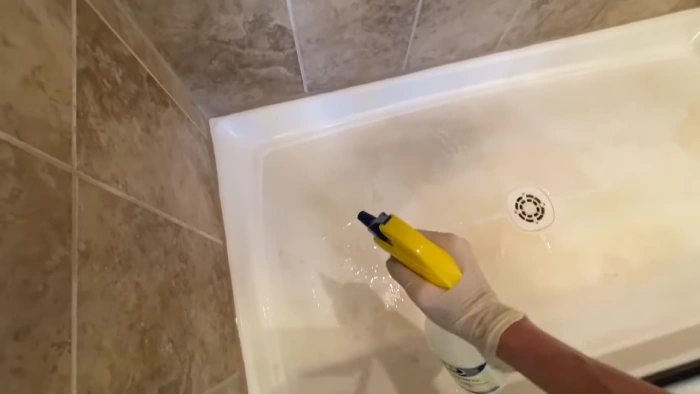Last Updated on October 16, 2023
Diving into the deep end of bathroom cleaning can be intimidating. When scrubbing away those pesky soap scum, mold & mildew deposits, and caked-on grime, you may want immediate results that leave your tub sparkling. But is bleach a way to get things spic ‘n span?
Bleach is powerful and can take care of dirt and bacteria, but it’s not always ideal. Before you reach for that bottle next time, consider some alternatives depending on what kind of material your tub is made from.
Some materials respond better to other cleaners than bleach, so explore those options before taking out the heavy stuff. We’ll discuss how to use bleach for deep cleaning, plus some alternative methods you can try.
Can You Use Bleach To Clean Bathtub: Reasons & Steps
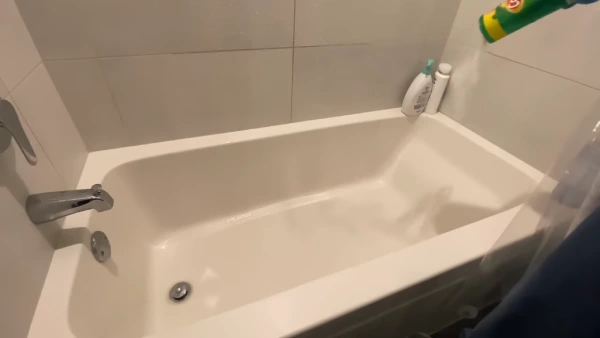
Which Types of Bathtubs Can You Clean with Bleach?
Porcelain and fiberglass bathtubs can both be effectively cleaned with chlorine bleach as long as the appropriate safety protocols are followed. To ensure that no damage is done to the bathtub, it is always important to dilute the bleach with water before use.
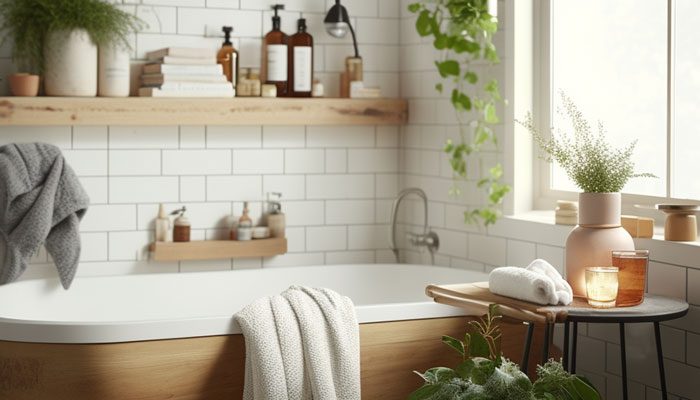
This will help to prevent any discoloration or other adverse effects on the surface of the tub. It is also advisable to wear protective gloves when cleaning a bathtub with bleach in order to protect skin from exposure.
Which Types of Bathtubs Can’t You Clean with Bleach?
Acrylic or enameled cast iron bathtubs should not be cleaned with bleach. The corrosive nature of bleach can cause significant damage to these types of surfaces, leading to discoloration, cracks, or other serious defects.
Even if properly diluted and applied, bleaching agents can still lessen the vibrancy of certain colors and patterns in these bathtubs over time.
How Do You Clean a Porcelain or Fiberglass Tub with Bleach?

Cleaning a porcelain or fiberglass bathtub with bleach is a safe and effective way to keep it sparkling and free of germs. Bleach is an excellent tool for removing dirt, grime, mold, mildew, and bacteria, making it an ideal choice for deep cleaning bathroom surfaces.
Step 1: Mix up a solution of bleach and water. To make the solution, pour ½ cup of bleach into a gallon of water. Ensure that the container you use can hold at least a gallon of liquid.
Step 2: Once your bleach-water solution is ready, coat the surface of the tub with it by either pouring it on directly or using a damp sponge to spread it around evenly.
Step 3: Let the bleaching solution sit on the surface of your tub for at least five minutes in order to kill any germs or bacteria present, as well as loosen any dirt or grime that may be stuck onto its surfaces.
Step 4: After five minutes have passed, use a sponge or soft scrub to scrub all parts of your tub that are covered with the bleach-water solution. Put some elbow grease into it and focus especially on areas where there may be tough stains like soap scum build-up or rust spots.
Step 5: Rinse off all traces of the bleach-water solution from its surface using fresh water from your showerhead or sink faucet. Make sure that none of the bleaching solutions remains on its surfaces, as this could cause discoloration if leftover time.
Bleach Alternatives to Clean a Bathtub
There are several alternatives to bleach that are just as effective in getting rid of dirt and grime without causing any damage.

Method 1: Using Vinegar
Vinegar is an excellent and versatile cleaner that can help remove soap scum, hard water stains, and grit from the surface of your bathtub. It’s also very easy to use, doesn’t require any special tools or equipment, and has a pleasant scent.
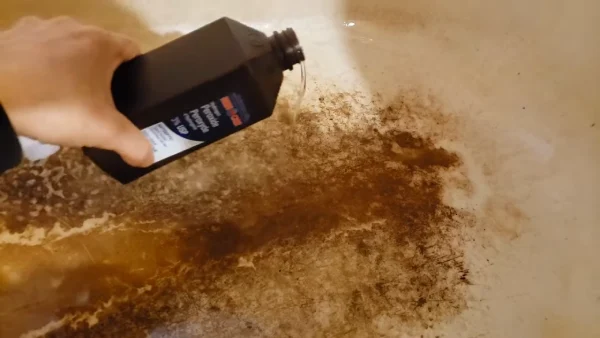
Step 1: Prepare the Cleaning Solution
Mix together equal parts of water and white vinegar in a spray bottle. You can also add a teaspoon of lemon juice if desired for a pleasant scent. Make sure to shake the bottle well before each use until all ingredients are dissolved.
Step 2: Spray the Tub
Spray the entire tub with the cleaning solution, making sure to cover all areas that need cleaning. Allow the solution to sit on the surface for 15 to 20 minutes to penetrate deep into dirt and grime.
Step 3: Scrub with Sponge or Cloth
Using a sponge or damp cloth, lightly scrub away any loosened hard water stains, soap scum, and other grit from the tub’s surface. Take care not to scrub too hard, as it may cause damage or scratches to the surface of your tub.
Step 4: Rinse Away Debris
When finished scrubbing, rinse away all debris down the drain with hot water until everything is removed from both the inside and outside walls of your tub. The tub should now be sparkling clean!
Method 2: Baking Soda for Heavily Stained Bathtub
If your bathtub is heavily stained, then baking soda is an excellent alternative for getting it sparkling clean again quickly and easily. It will help remove tough stains from your tub’s surface without causing any damage or scratches.
Step 1: Make a Cleaning Solution
In order to make an effective cleaning solution for heavily stained bathtubs, mix two cups of baking soda with 1/2 cup of lemon juice in warm water inside a spray bottle until all ingredients are dissolved completely. Shake well before each use until fully mixed together.
Step 2: Let the Solution Sit
Spray this mixture directly onto any area that needs cleaning on your tub’s surface and let it sit there 30 to 60 minutes, depending on how bad the stains are, before starting to use it as a scrubbing agent.
Step 3: Scrub Away Tough Stain
Take a wet sponge or cloth rag and gently rub away any tough stains until they’re gone. Don’t go too hard on it, as that can cause scratches on the wall and make your job harder.
Step 4: Rinse Away Rust/Debris
Once done scrubbing away all tough stains, rinse away all debris with hot water down the drain until no residue remains left behind on either side. Your bathtub should once again appear brand new.
Method 3: Dish Detergent to Clean a Bathtub without Scrubbing
Dish detergent is one of the most economical and effective ways of cleaning bathtubs without scrubbing. It’s easy to use, economical and can provide a thorough cleaning of soap scum, dirt, and grime in minutes.
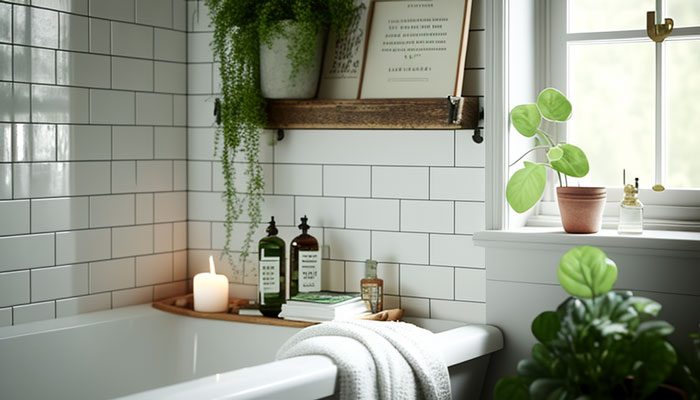
Step 1: To begin, combine one-fourth cup of white vinegar with hot water in a spray bottle. Shake vigorously to mix.
Step 2: Add 1/4 cup dish detergent to the solution and shake again until it is blended together well.
Step 3: Spray the mixture onto the dirty tub rings or other areas of your bathtub that have soap scum or dirt buildup. Let it sit for about 15 minutes to loosen its debris.
Step 4: If there are still stubborn stains or mildew present, pour some toilet bowl cleaner directly onto those spots and let it sit for about 30 minutes up to an hour.
Step 5: This cleaning solution removes the dirt and soap scum from top to bottom. Be sure to rinse the area with cold water.
Method 4: Commercial Toilet Bowl Cleaner
Commercial toilet bowl cleaners such as Mr clean magic eraser, Clorox toilet bowl cleaner, etc., are specifically formulated for deep cleaning toilets but they can also be used on bathtubs too. They work great on removing stubborn mold, mildew, and difficult stains that ordinary cleaners just can’t tackle.
Step 1: Begin by spraying the commercial toilet bowl cleaner onto the affected areas of your bathtub, such as stained tub rings or visible mold and mildew buildup on surfaces. Allow it time to do its job as per directions on specific brands (usually about 30 minutes).
Step 2: Using a scrub brush, start scrubbing away at the loosened debris from top sections down toward the bottom sections of your tub walls and flooring area. Ensure that you rinse off excess cleanser residue with cold water.
Step 3: Wipe down all tub surfaces with a microfiber cloth then dry off completely before allowing anyone back to use it again. This will help ensure that no moisture remains behind which could cause staining issues later on down the line after the cleaning session is over.
Why Did Bleach Turn My Bathtub Brown?
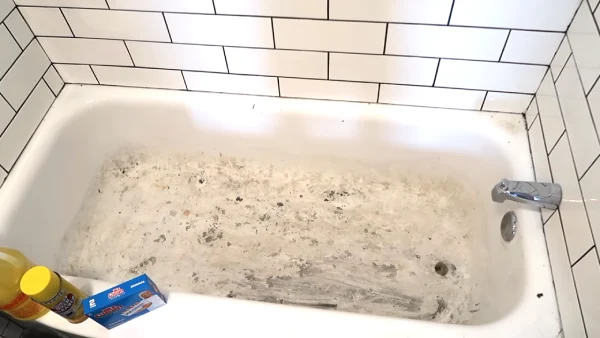
When a bleach solution is applied to an old porcelain bathtub, it can cause it to turn brown. This is due to the fact that many older porcelain bathtubs contain a ferrous (iron) component.
When chlorine, which is present in many bleaches, reacts with the iron component, it causes oxidation. Oxidized iron then turns into rust, which often manifests as a rusty red, brown or yellow color on the surface of the bathtub.
What Cleaning Products To Use To Clean A Bathtub?
When it comes to cleaning your bathtub, dish soap is usually the way to go for everyday types of grime and dirt. But if you need something with more bite, then try mixing baking soda with water or bathroom cleaner.
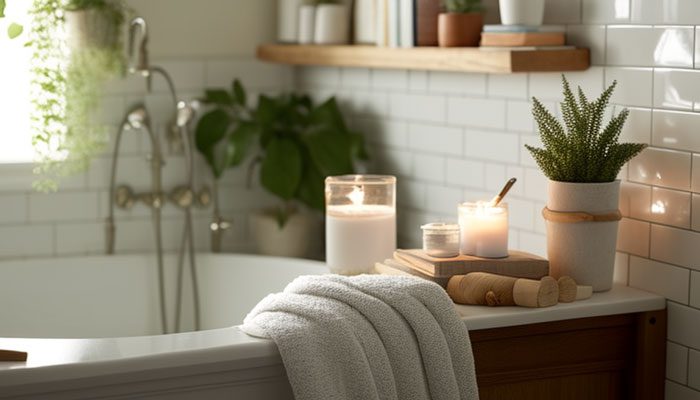
Vinegar and lemon juice can both be used for natural solutions as both have antibacterial properties. They are effective at cutting through grease and grime without having to resort to harsher chemicals like bleach.
How Often Should You Bleach Your Bathtub?
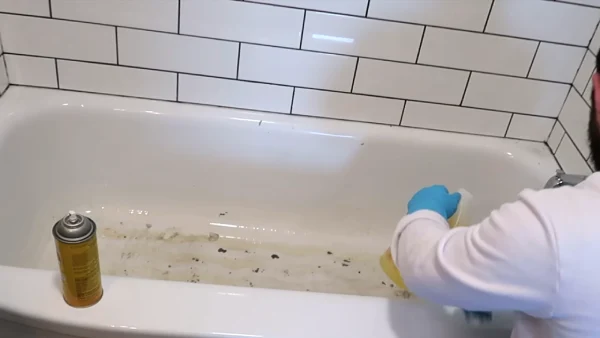
It is recommended that you clean and disinfect your bathtub with a diluted bleach solution every two weeks. This bleach solution can also be used to clean rubber bathtub mats. This will help to keep your bathtub and bathroom in general free of germs and bacteria while also helping to keep it looking its best.
Make Your Bathtub Clean and White Again
Clean your bathtub and make it white again using bleach correctly and on the right materials. Porcelain and fiberglass tubs are suitable for using bleach, but other materials, such as acrylic and enameled cast iron, shouldn’t be fine.
There are plenty of alternative cleaning methods for acrylic bathtubs, like vinegar, baking soda, and dish detergent solutions. With these methods in mind, cleaning your bathtub will be easier than ever.

